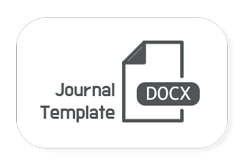Monetary Policy Transmission Paths and Money Supply in Sub-Saharan Africa: Evidence from Nigeria and Ghana
DOI:
https://doi.org/10.53935/26415313.v4i2.187Keywords:
Monetary policies, Money supply, Transmission paths, Lending rate, Credit to private sector, Treasury bill rate.Abstract
The main objective of this study gears towards evaluating monetary policy transmission paths and money supply in Sub- Saharan Africa: evidence from Nigeria and Ghana from1981- 2018. The Central Bank of Nigeria, Bank of Ghana and World Bank, World Development Indicator of 2018 furnished us with the data used for analysis. This study explored three different monetary policy transmission channels: interest rate, credit and asset pricing transmission channels and these variables were regressed on money supply in both countries using Auto Regressive Distributed Lag (ARDL) Model estimation technique. The study also employed other diagnostic tests such as: Normality, Auto correlation test, Heteroskedasticity test and Breusch-Godfrey Serial Correlation LM test and they confirmed the validity and reliability of the model employed. The inferential results revealed that credit to private sector transmission channels in both Nigeria and Ghana had positive and significant impact on money supply but lending rate transmission paths in the two countries impacted insignificantly on money supply. This study concludes that monetary policy transmission channels in Nigeria were more robust in impacting on money supply than in Ghana. As such, the study recommends that monetary authorities of both countries need to formulate stringent monetary policies that will reduce the circulation of money outside the financial systems and there should be a synergy between monetary and fiscal policies in both economies so as to aid the instruments of macroeconomic policies achieve their objectives.
Downloads
Downloads
Published
How to Cite
Issue
Section
License

This work is licensed under a Creative Commons Attribution-NonCommercial 4.0 International License.












